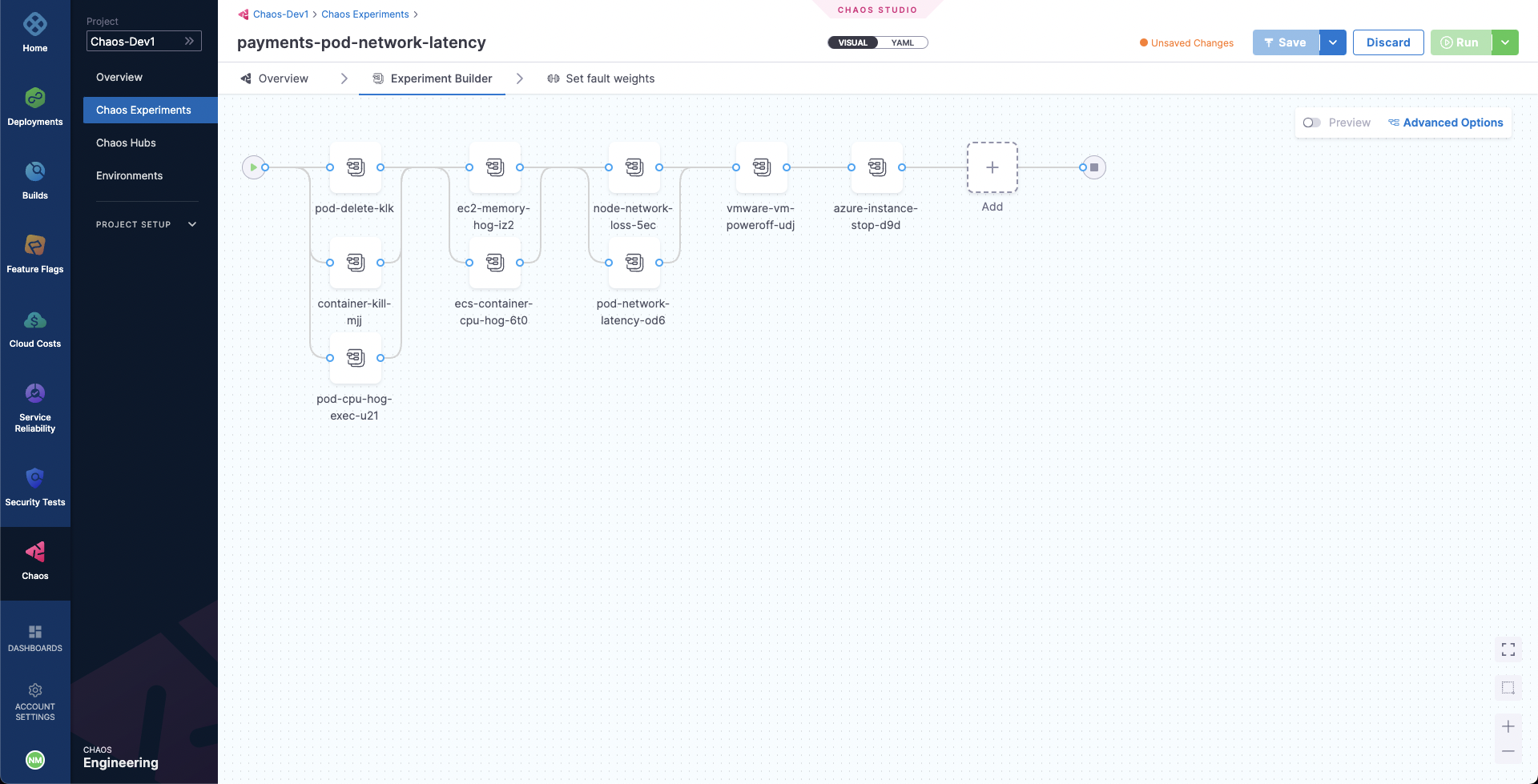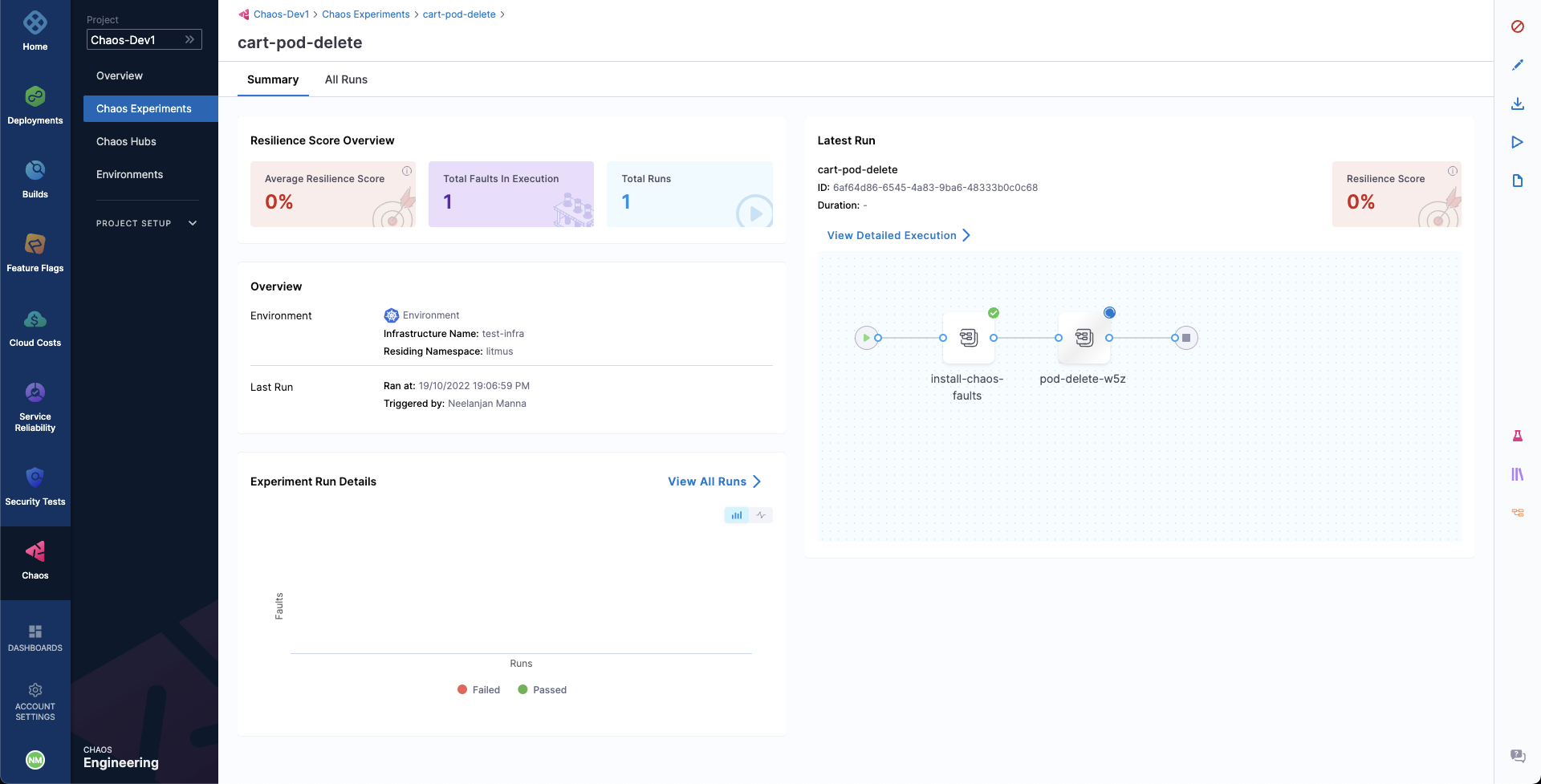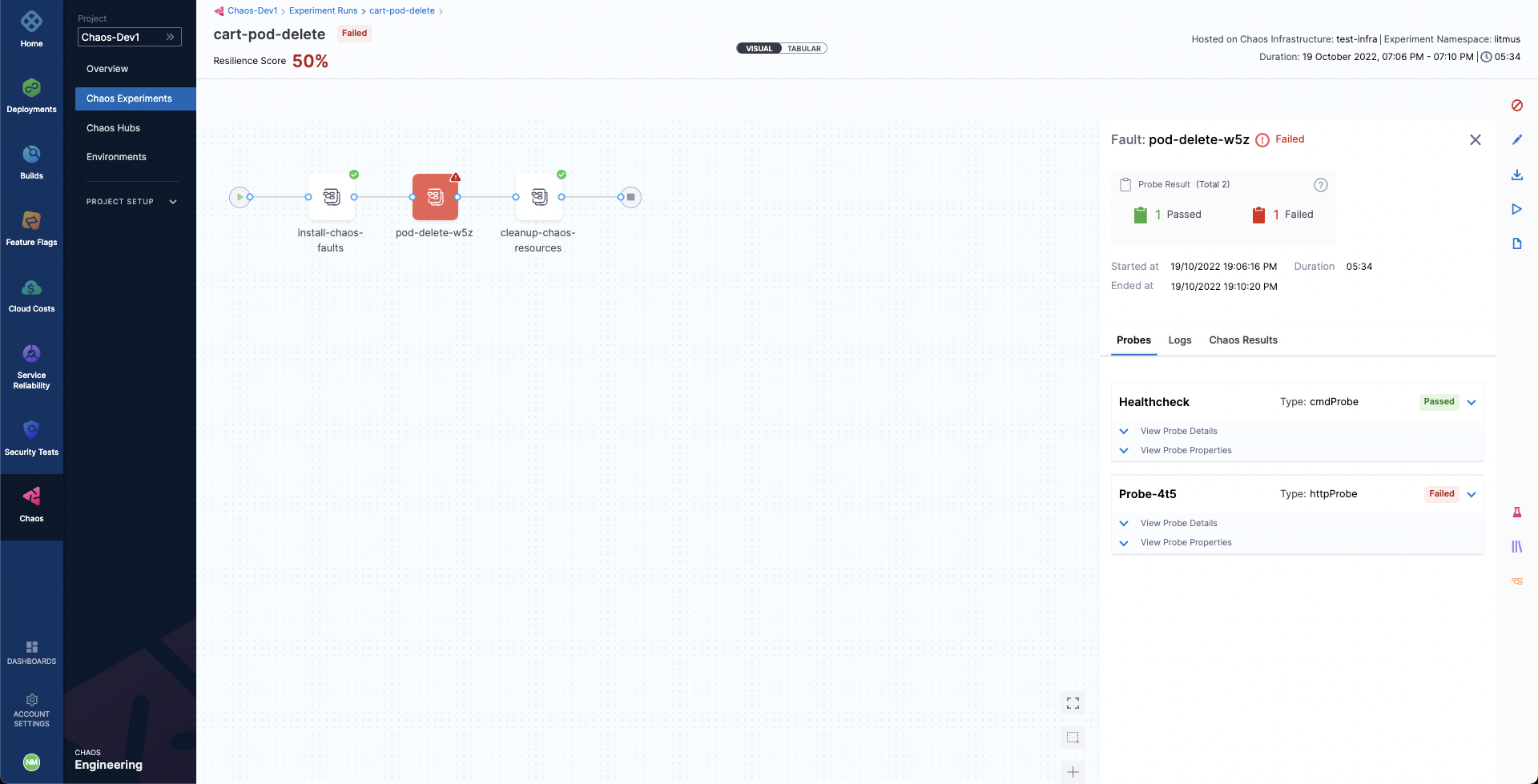Run chaos experiments with serial and parallel faults
Complex chaos experiments can be used for validating the resiliency of the entire application stack as part of a single experiment only.
Harness Chaos Engineering scales efficiently in a cloud-native manner to execute these experiments, which often have multiple faults running in parallel at any given time.
While creating complex chaos experiments, one must consider the overall impact on the application when a number of parallel faults are executing due to lack of resources, since it can affect the user experience in production environments.
To add a fault in parallel to another fault, select the + icon below the already added fault; the icon will only appear upon hovering the cursor below the already added fault. Similarly, to add a fault in serial to another fault, select the + icon to the right of the already added fault. This way, you may add as many faults as necessary.

Analyze chaos experiments
You can observe the status of execution of fault/s of a chaos experiment during its run. The screen shows the experiment pipeline on the right hand side, and details such as Environment, Infrastructure Name, and the runs that have passed and failed on the left hand side.

When the experiment completes execution, it displays the Resilience Score. This score describes how resilient your application is to unplanned failures. The probe success percentage helps determine the outcome of every fault in the chaos experiment. Probes (if any) associated with the experiment are used to understand how the application fared.

If any of the faults fail, you can find the Fail Step that elaborates on the reason why the fault failed.
